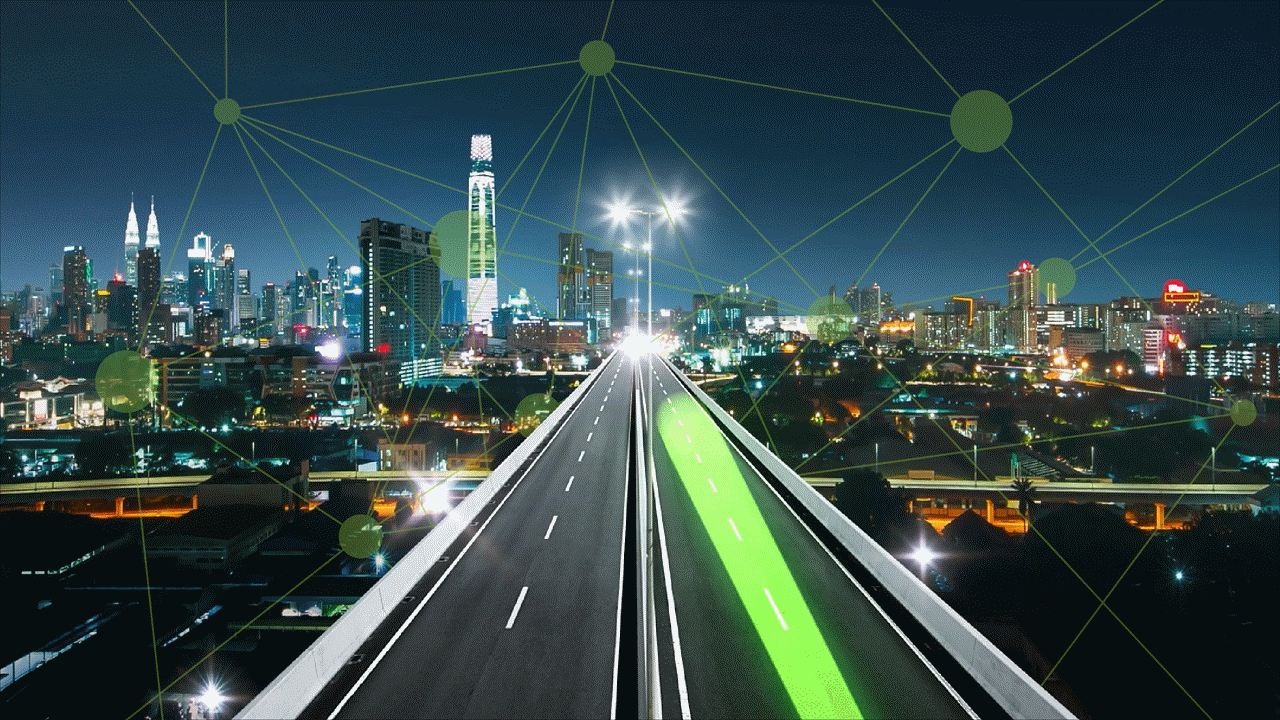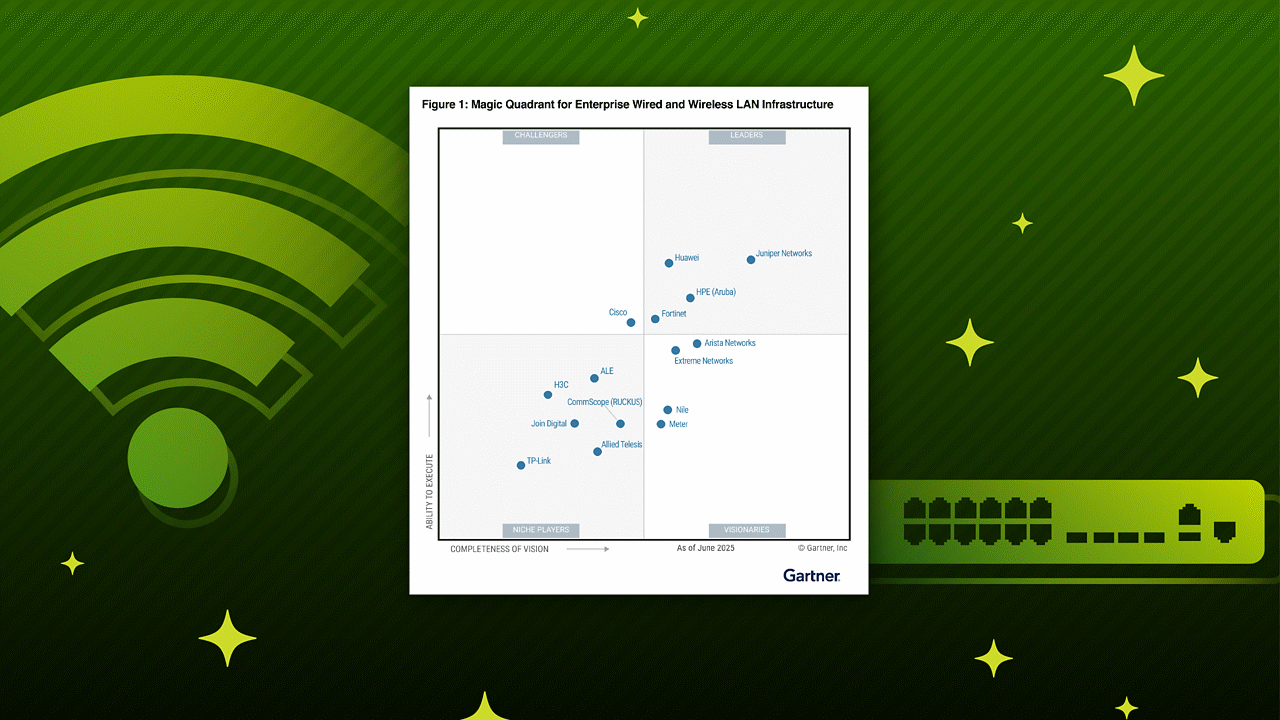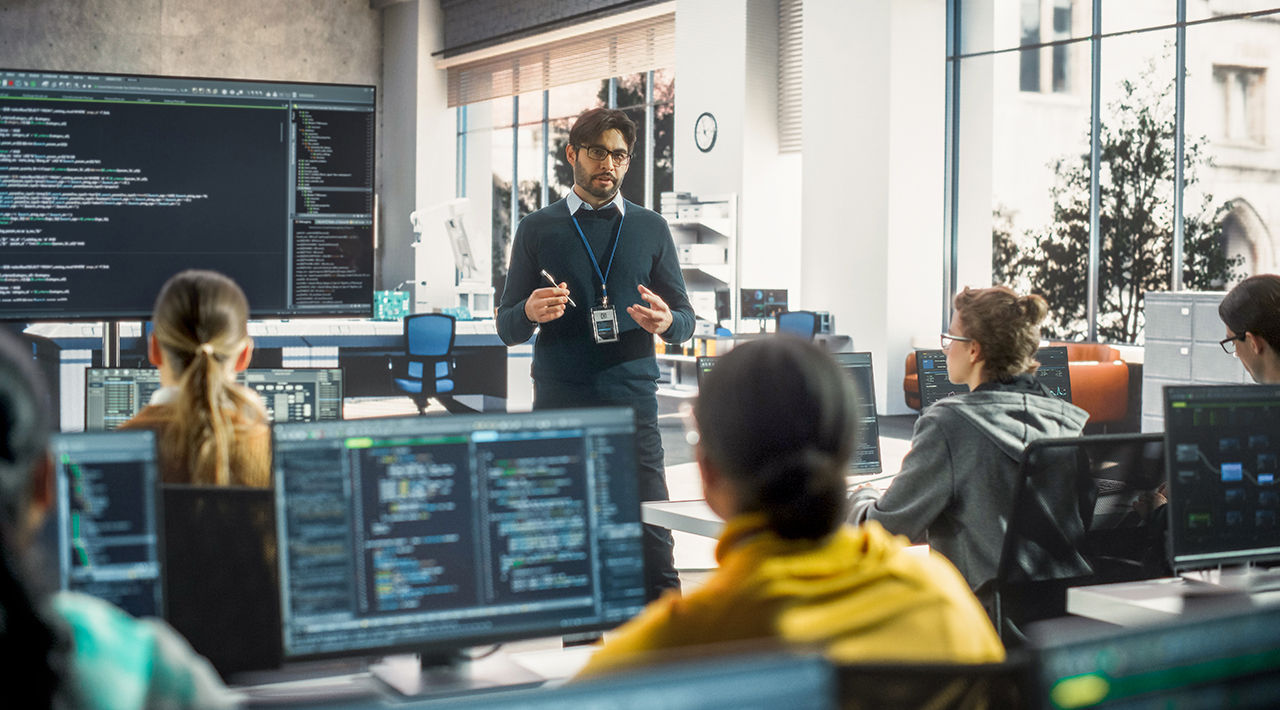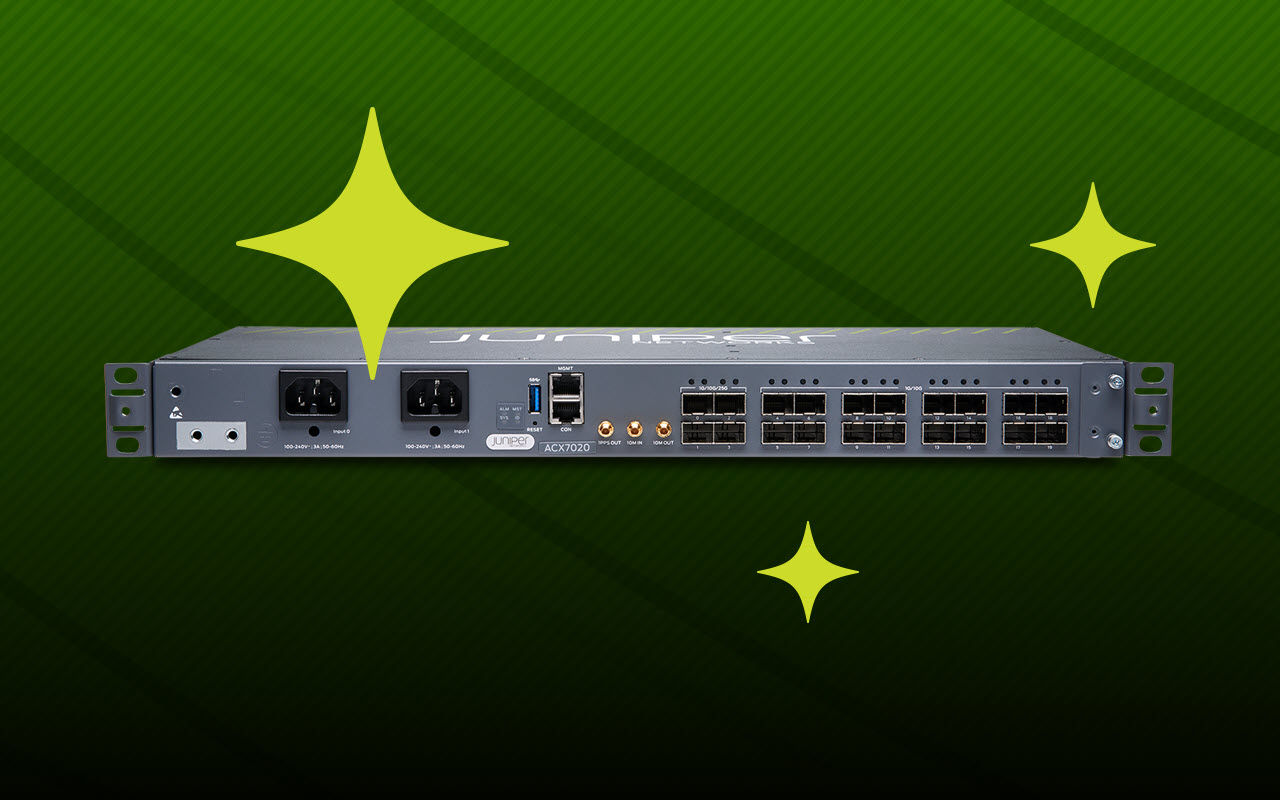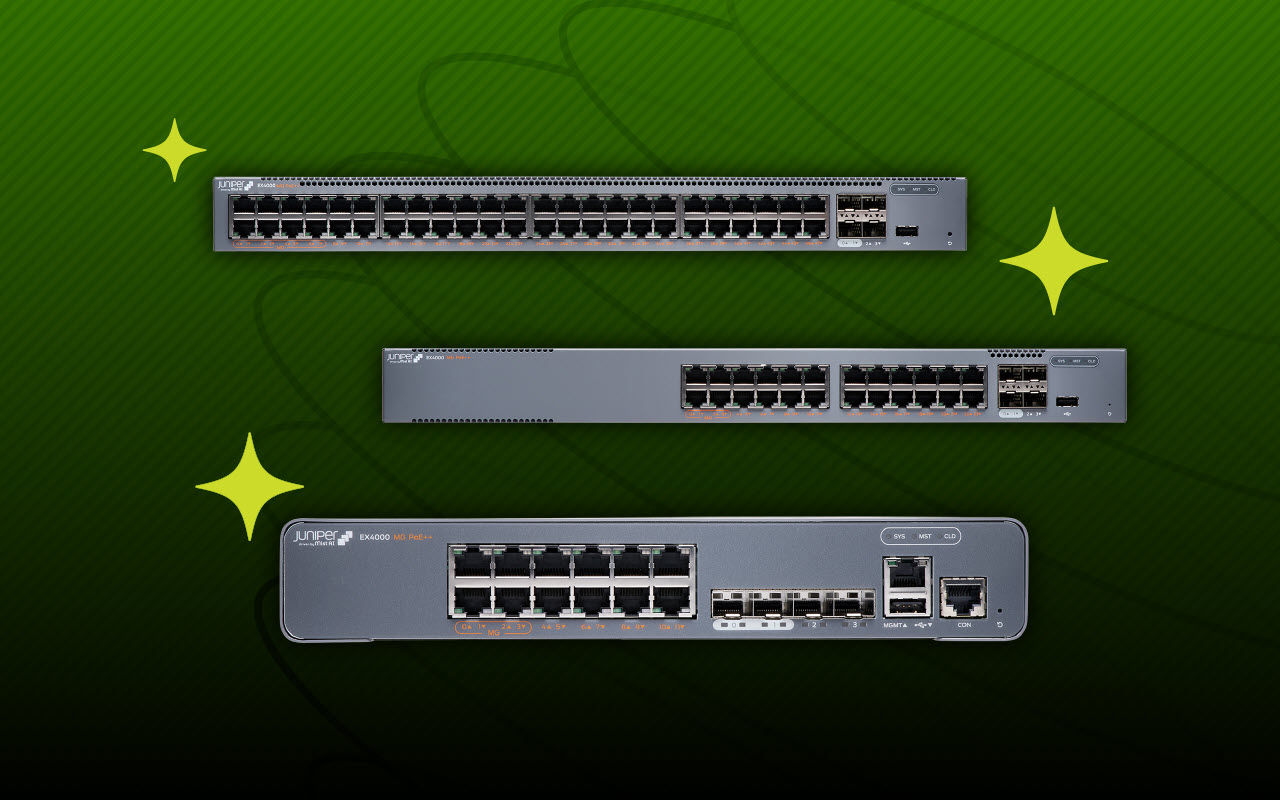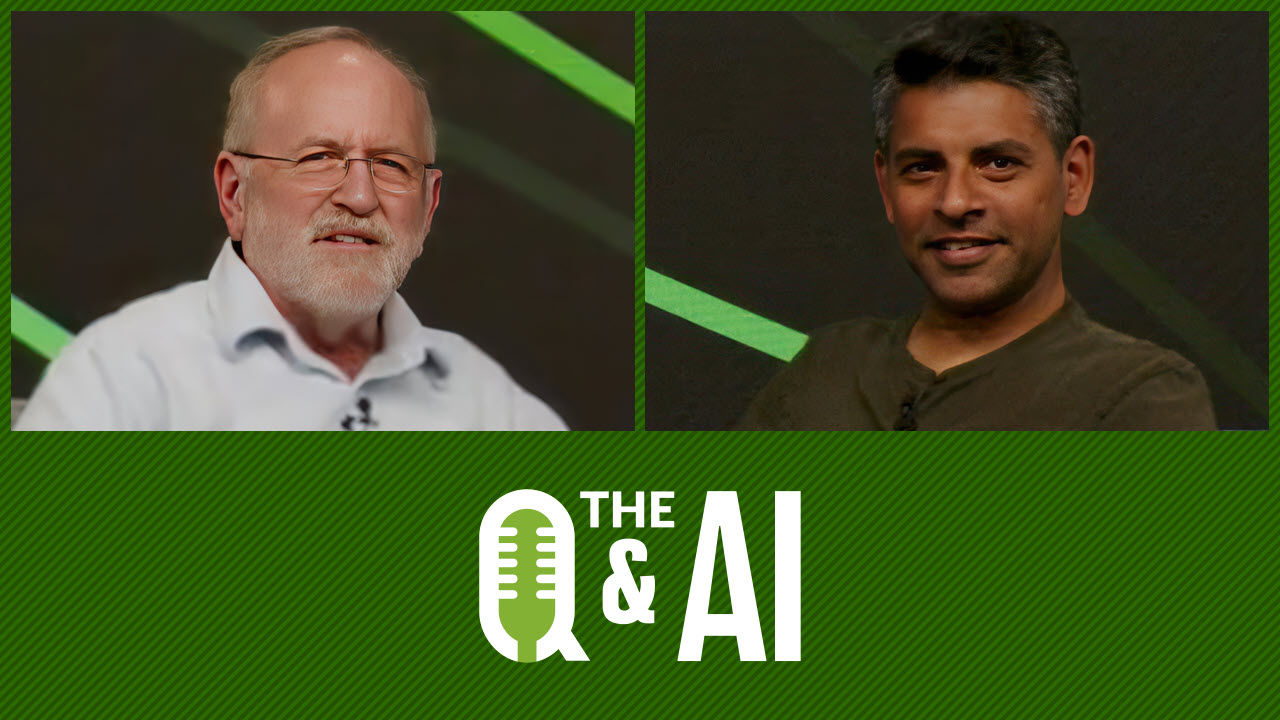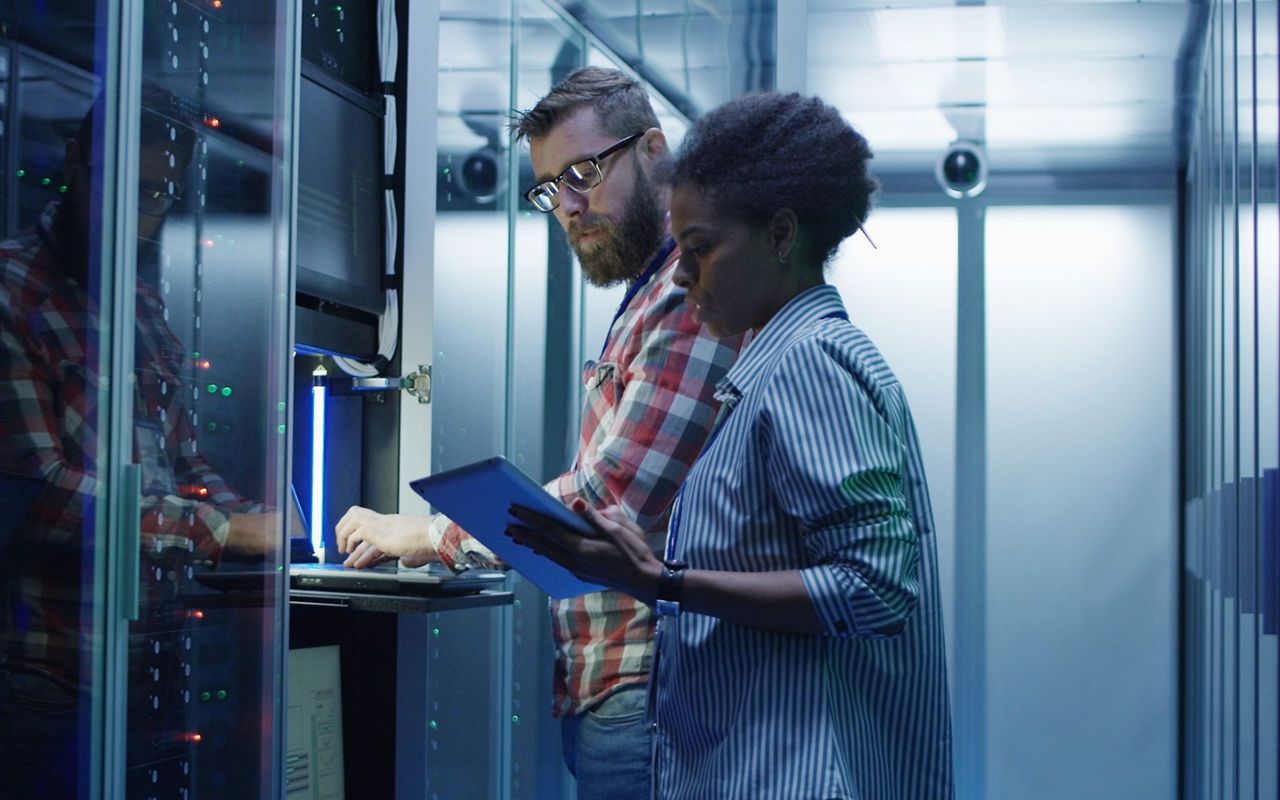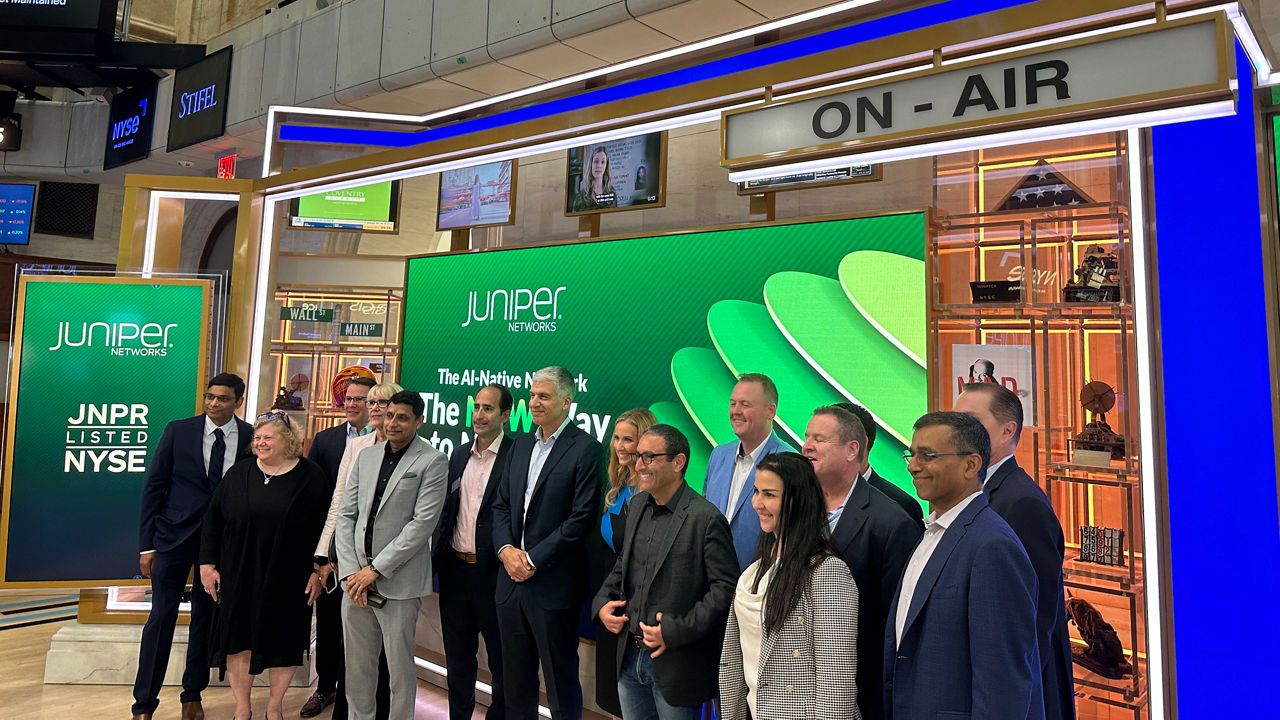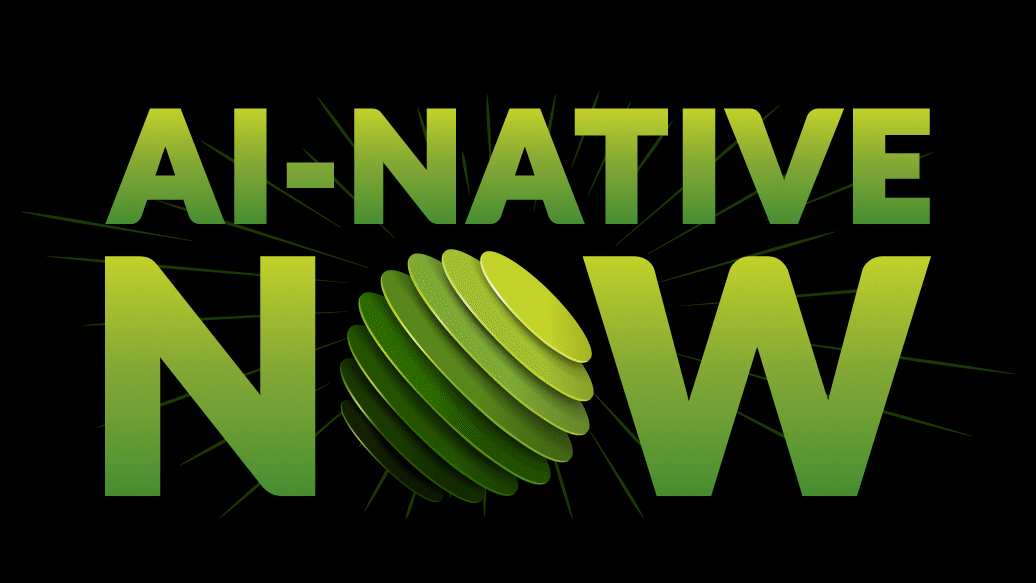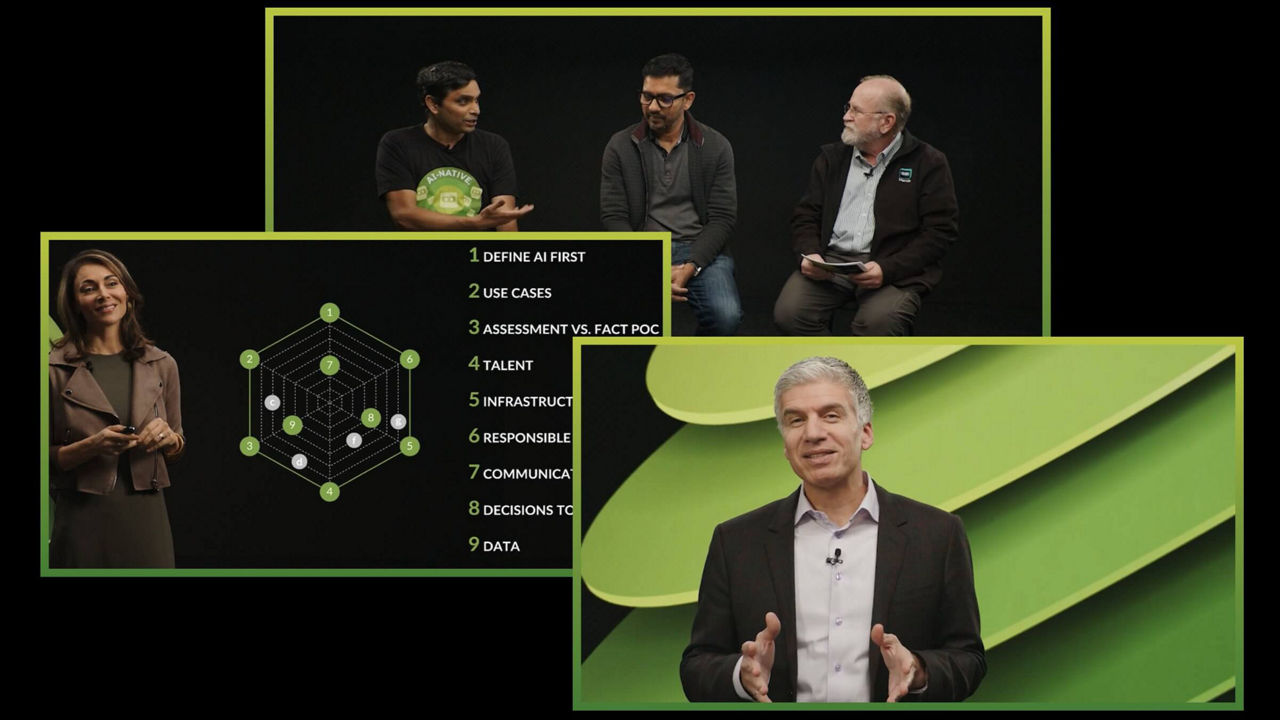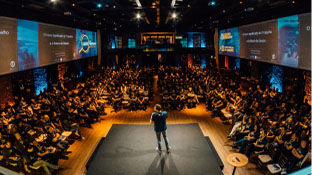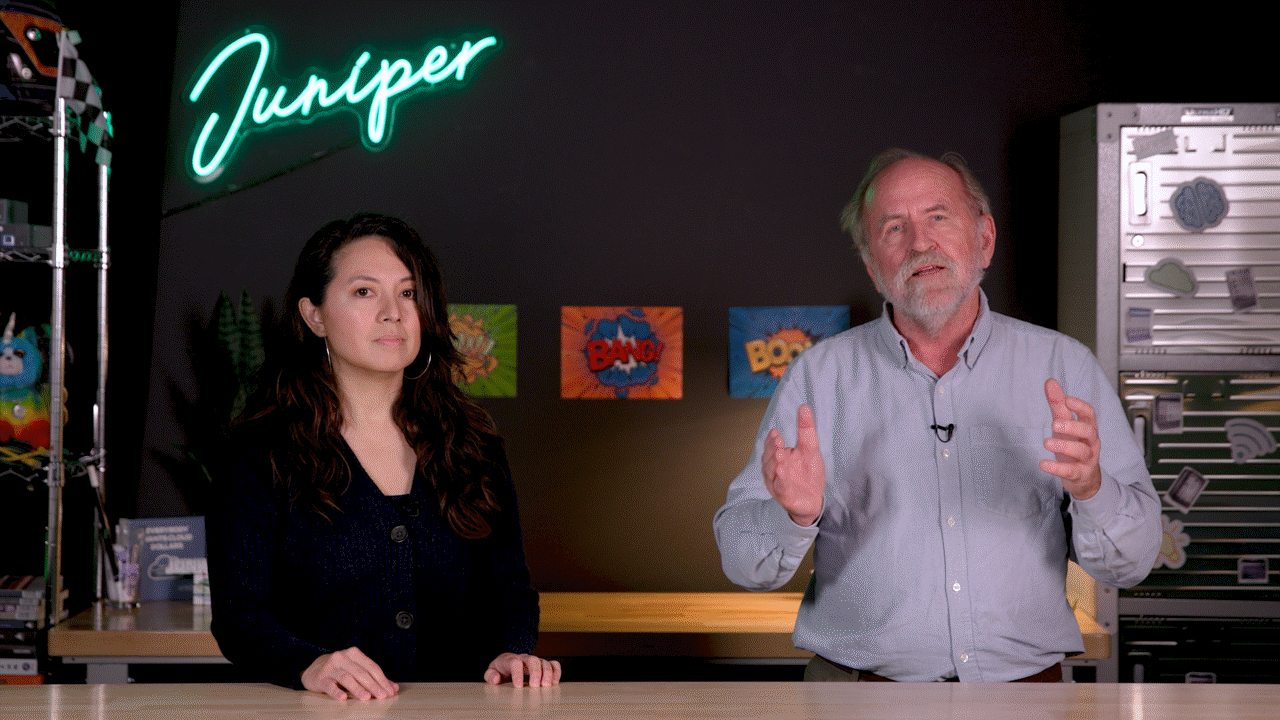Episode 7: Generational Shifts and AI in the Modern Workforce

Episode 7: Generational Shifts and AI in the Modern Workforce
In this episode of The Q&AI Podcast, Gary Sorrentino, Global CIO at Zoom, shares his journey from banking to tech and the role generative AI plays in business today. He explains how AI evolved from a fascination to a crucial innovation tool. Gary and host, Bob Friday, discuss generational shifts in the workforce, hybrid work models, and a future enriched by AI companions and digital twins.
You’ll learn
How AI is the next step in the evolution of automation
About the impact of AI on the workforce, including the displacement and creation of jobs
How different generations have different preferences for working and interacting with technology
Who is this for?
Host

Guest speakers
Transcript
Bob: Well, thank you everyone. And thank you, Gary.
Gary: Oh, my pleasure.
Bob: So, Gary, I think you've been the CIO at Zoom for what, five years now?
Gary: Almost five years.
Bob: So, I thought maybe we start this discussion a little bit about from a CIO perspective. You know, for me, my journey for AI started back when I saw Watson play Jeopardy, like, hey, if they can do that, we should be able to build something to play networking. So, when, when did your journey for AI start?
Gary: So, I'm, I did about 25 years in banking and then I decided to retire in 2019 and then I met an amazing gentleman called Eric and he asked me, I guess I got all the questions wrong cause I'm still working, right?
But I started, January 2020, what is it? Almost 11 weeks later, the world changed completely. I held on, and now we're almost back to normal. The real reason he got me to work for Zoom. Just so you know is, one of the reasons I retired was I was traveling too much for JPMorgan, and he said, Gary, this is a video company, you'll never travel again.
I travel four times a week now, minimum, right? But it's just crazy how the world is trying to get back to where it was, right? And, so it's, uh, so my background has basically been a CIO, a CTO, a CISO, and somewhere in the way there's someone stuck in CFO.
Bob: And, yeah, so the other thing I would maybe talk a little bit about is, when Susie and I started miss, I think in 2014, I have to be honest, you know, I think everyone bought into the real time operations story. I don't think any investor or any customers actually knew what AI was.
Gary: No, we were calling it what? predictive analytics machine learning. We had a lot of different names for it then. Not AI.
Bob: So maybe your definition from a CIO, what, what's your definition of AI? You know, I always see AI as the AI beholder. I finally got under one of these self-driving Waymo. Is that ai?
Gary: So, for me, pragmatically AI is a technology, right? It's like HTML. It's like Java, right? However, boards today, you know, they're the first one to say, I want my CIO to go down to the store and buy more AI. And I asked, does it come by the pound, the foot, the CPU?
How do you buy it? Right? Really, I think the thing with AI today is we've caught onto that buzzword, okay, bravo. But now we have to figure out how to turn it into a solution. And I think that's what some of the boards are missing right now, is that you just can't enable AI. You really have to figure out, okay, how do I get this from a technology to a value?
And I think we're at that inflection point right now. You figured out how to do it in, in your tool. But most of the AI that's appearing on a desktop today is still being used in the, hey, summarize this meeting. No one's going to read the summary anyway. Right? And so, we have to figure out how to get the members laughing.
Right. But how many times have you read the summary? Right. You were in the meeting. Why would you read the summary? Right. But at the end of the day, I think that's where the next part has to come is truly value to the company. And we're getting there.
Bob: Yeah. I always look at AI as kind of the next step in the evolution of automation, right guys? We've been doing this for years. We've been automating complex things, flying planes, autonomously and everything, but why do you think it was different about this step in automation? Right. You look at what we've done.
Gary: Because I think here's what happens. You're correct. Everything we did before automated. Move something from, it moved the chess piece from one spot to the next spot to the next spot. This version of AI that's coming out, which is still maturing, is going to help get stuff done. Right? That's the goal. Right? How do we turn this into something that the technologists understand, hey I'm going to move this, I'm going to read the world, and this switch needs to be turned.
Cool. No one sees that. You're not going to get a thank you. How many people send a thank you note to a CIO, hey my mail went out today. The phone rang. Thank you very much. Okay, the summary came, table stakes, but when you say hey it summarized it, created tasks, and sent the tasks to the people that needed to do it before the meeting, before I walked out of the room, you get a thank you for that.
And, and it's not about getting Thank You's It's about getting value. And I think today, if we can show AI and the value it's giving, that's where companies need to continue. But your, your employees have to be curious. And I think they're scared right now. A little bit.
Bob: So when, when I talk to a lot of enterprise customers and CIOs, I mean, I think they've gone from being skeptics in marketing. I think everyone kind of believes in AI is going to do something for them. It's not quite clear exactly what, like you say, I'm not sure everyone's quite clear what it's going to do for them. From the CIO perspective, where are you on the journey right now with AI?
Gary: Well, so develop AI, we put it in a product. So it's a little hard when, what I learned was when I came out of industry is it works differently here because when you create a tech product, it's different than using a tech product, right? And it's almost like, come on, we, you have to, what is it? We'll say the right word. Now we have to drink our own champagne.
Okay. At the end of the day, though, I still see even people inside of zoom sometimes struggling to figure out the curiosity part of it. And how do I get beyond the normal? So, as a CIO, one of the things I want to do inside my company is I want them to use it. I want them to be curious because the more feedback I get from you and from them, I can make it better.
And we can, and it's not making AI better. It will get better on its own. That's the engines and the LLMs, but the use cases will get better. Particular, one of the use cases we have is, you can take AI with you now. So basically, if you're meeting the two of us meet, I wanted to call it zoom at the bar, I hope you're not recording this, right?
But I lost, it's called interpersonal meeting now. Why can't we, when we're having a cocktail at the bar, put our phone down, let it record the conversation, summarize it. Okay, identify speaker one, identify speaker two. And then before you leave the bar, you send it to your team and go, hey, I met Gary. He's got a unique perspective on how to roll out AI. Here's our notes. See, there's a value there. Right. And you got to get people to be curious about it.
Bob: Yeah. I mean, I think when I talked to the healthcare customers, that's probably the best use case I've heard right now. I was trying to free up the doctors.
Gary: Trying to free up the doctors.
Bob: Give them more free time to actually work with the patients and everything.
Gary: Yes.
Bob: So, it sounds like at zoom, you've got internal use cases, at Juniper right now, Rami is like, hey, 20 percent they are all this gen AI stuff is going to make things more efficient by 20%. Any words of wisdom out there in zoom?
Gary: I'm going to refer to Harvard Business Review and, Dear CEOs, please don't eliminate 12 percent of the head count next year due to 2024 AI saves.
Okay, I think right now we're at the inflection point of figuring out the business cases and the value. We're still trying to figure out how to value it, and until it can do more. Until it can get to that next level. Right? I think right now, my opinion is it's not going to give us in the near term, some of the cost savings.
It will give us some of the unnecessary elimination of work. I love that. It'll automate some of the mundane tasks. I love that. It'll make our users more intelligent. I love that. It's not going to eliminate them yet. Right? We're not at that inflection point where everything that we do for them, can be used by AI yet, and they're also not curious.
And so, uh, what was the Harvard? I'm sorry. I read Harvard Business Review. One of the things they also said was, AI is not going to replace humans. Humans with AI will replace humans without AI. And I think that's the next go for model.
Bob: Yeah, I mean, I think I saw the World Economic Forum, right? They're like saying, you know, there's gonna be 86 million jobs displaced, but 93 million created. Any visibility on where you think, what job is going to be impacted, what areas we're going to see.
Gary: I think what we're going to see is, we're going to see some of the mundane stuff going away. I mean, unfortunately today we all hire analysts and sometimes they get stuck with some of the mundane work and some of the things like that.
Could you actually live without cut and paste? Of course not, because we have to move data from one system to another because as CIOs, we failed the user, right? It's not there. But with AI today, now they can get across macro datasets. Data lakes and things like that. They don't have to do cut and paste and things like that.
So, what I think we're going to see is we're going to see, I don't want to say higher level cause I think that's wrong, but we're going to see a more intelligent worker rising and we're going to see other people having to be re-skilled to take those jobs. And I think that's what we're going to see.
You know, you're going to see things in contact center areas where it's, we're doing more with agents. Look, we're a multi-generational crew here, right? Any Gen Z's here? No. Huh? Always underrepresented. Okay. But I will tell you they don't want to talk to humans. They want to talk to bots. Okay, so if the next cohort is very bot friendly, I'm not, they're very bot friendly, right? Then we don't need to have those humans telling them their bank balance.
Bob: Well, I think that leads into the next step of collaboration. I mean, Zoom with COVID, right? You guys were in the middle of this new work. I don't know how people are working. Boomers, Gen X, Gen Y, Gen Z. Vision around, how is Zoom going to evolve or what do you see the new workforce looking like in the future? Are we all going to be working remotely?
Gary: No.
Bob: The boomers are going to basically, hey, it's time to get back that office.
Gary: So, I think what's going to happen is this we're about 12 boomers right now proud boomer. Okay 48% of us. I'm sorry. 10 000 of us a day are retiring Okay. For some reason, I hate this stat, 48% of the boomers wanna work till 70.
That's not me. I'm not in that 48%, but what will happen is peer forward, let's not go too far. Let's go to 2030. In 2030, I think what you're gonna see is the boomers are gonna be gone less than 2%. God love them. They had good tribal knowledge. Hopefully we grab the wisdom. But now the Gen Xers out there, who's a Gen X, yeah, you're gonna start managing and leading with a vengeance.
You're going to start thinking about the future. Remember, you have to keep a generation called Gen Z's happy, or they'll go somewhere else, and Gen A's are right around the corner. And we're starting to see these 12 year old patterns of Gen A's. Millennials? Millennials in the room? You're going to be the new leaders, right?
Gen X is the managers, Millennials the new leaders, Gen Z's taking over. What we're going to probably see is the hybrid model will fine tune. What we will figure out is people have to be productive where they think they can be productive. Customer service people always have to be where the customers are.
But I think what will happen is we will see this evening out in 2030. I don't think the hybrid, is over. Actually, World Economic Forum, they stopped calling it the future of work. The next era is going to be called human centric era. And it's all about giving all humans the ability to work where they're most productive.
I think that's the next positive step here. It's not going to be a free for all. Everybody's not going to decide on their own. And I think the last thing to, since you brought up generations or every one of us is not true to any column anymore. I know I'm not, I'm a boomer work synchronous my whole life.
I love working asynchronous now. I love putting something out there in chat, being on stage here, great event. And when I go back to that little chat, someone moved the ball down the field a little bit, right? That works. So, does that make me a boomer or a Gen Z? It makes me a new worker. Right? An alignment of what I think I want to be from those four columns. And that's what Zoom's looking at. How are we powering human connections for the new worker?
Bob: It's interesting, if we take AI to the limit where we actually start automating what humans do, you kind of see this new worker concept. Are we actually headed to a Star Trek economy, where you guys, I don't need, I've got 8 billion people, I don't really have enough jobs for 8 billion people, are we finally going to change the nature of work?
Gary: So, every time someone says the word digital twin, everybody twinges, right? That's Skynet incoming. But I think the next evolution will be, I will bring my bot with me, there'll be a Gary bot, and I will bring it to the meeting with me, and it will take care of the mundane. Hey, can you send me this report?
Done. Hey, because you know, once you leave that meeting, how many pings does it take to get that person to actually do what they promised? Wouldn't it be great that when, before you leave the meeting, that action is already done? So, I think the next step will be, I'll get an AI, I don't want to say assistant or companion, I'll get an AI friend who's going to help me along the journey to make sure I get stuff done. Maybe someday there'll be a digital twin.
Bob: Maybe in the concept of AI and the IAP horror, what is the best example you've seen of AI so far out there?
Gary: You mean like a business value example?
Bob: A business value example, I mean, for me it was, I was in Scottsdale last month and I ordered my Uber and it says no driver.
Gary: Yeah, I was in Phoenix too and I was hanging on with two hands and looking for the brake in the back seat.
Bob: Yeah, I was like, I was worried about it. Hey, where's this car going to stop?
Gary: I don't even know why they put a seat in the steering wheel there. I don't know who's going to jump in there, right?
Bob: Yeah. So, I mean, do you call that, you know.
Gary: What I think, it's, I'm still fixated on getting stuff done. Here's, what I think is a good business value example. We all have, we're all have salespeople. We all have things that we do where it has to be documented. So I'm going to use a banking reference cause that's my background. Imagine you're all billionaires. You all became billionaires. Okay.
The wealthiest people in the world sitting in this room, the banker comes to you because you're a billionaire. Okay. But when the banker comes to you, wouldn't it be great if they can use an iPhone, and they can use AI, and they can record and transcribe what you're saying, so I don't have to take notes, and then when I leave, everybody know what KYC is?
Know your client? That KYC form is filled out and sent to the CRM before I pass your front door. Those are business values. Right? That is taking the mundane out. That is making you more of an intelligent worker. That is also making it so that it speeds up progress. Those are the business cases I look for.
The same thing with agentic AI, right? Isn't it great that it can tell the agent, hey, by the way, this gentleman, he's purchased five cars from us, and here's the five cars. But you didn't have to look it up. I'm forcing it to your way. And I really think that those are the business cases we have to look for short term. Right? And then figure out, okay, how do we amplify them?
Bob: Yeah. Now, you may be a little biased on this next question, because this is kind of around, what would your advice be on the back to work? We all, we've all come, depended on Zoom now to do most of our job. Do you advise leaders to basically, you know, it's time to get the stick out, guys, I want you all back in work.
Gary: So, every time I get this question, everybody feels that I'm going to be the one saying stay home. Right? I don't know if that's the right answer either. RTO FOMA is very, very big right now. Once you hang up that, when you're home, say you're home on a Wednesday, cause that's the day most of your company goes in. Cause for some reason you had a doctor's appointment. Once you hang up that zoom call, cause we all use zoom, right?We all use zoom, right? All right. Much better.
Bob: No teams out here.
Gary: But at the end of the day, once you hang up that call and they're still in the conference room and your home alone, do you want to know what they're saying? And so what we're seeing is RTO FOMA. What I think is this, and I'm being very pragmatic about it.
Figure out what the right model is, okay? Give people the ability to be productive the way they want, with some guardrails and controls, right? And don't mandate it. The new generation of people, your kids by the way, right? You've made them very, I'm sorry, a little entitled, okay? And, and they're very tough on the way they want to work, and they know how they want to work.
How come 48 percent of all Gen Z's quit their first job within 90 days? Because they said, the company doesn't work the way I want to work, and I'll go find another one. Now parents out there, I love it, because you tell them, don't worry about it, you can live home for free. Right? And you enable that, but, but we're seeing this cohort of people who are coming in, they'll be 40 percent by 2030, and they have a certain way of working.
And so, we are going to have to figure out, how do we, how do we get all that there? So, I'm not sure if it's, I don't think it's home or the office, I think it's hybrid. And it's the way it needs to be certain jobs, developers stay home, you're putting headsets on, you're putting the phone in the desk, you're putting glasses on, I don't even know what you're listening to, but figure out where the jobs are supposed to be.
And I think that being this human-centric era that the World Economic Forum is talking about is how do we empower people to be their very best? And one of the ways is where do they need to work and why do they need to work there? Right? And how do they interact with others? Right? And make the offices now immediate, just like this.
It's a place where we come to engage for the human-to-human contact. I'll be honest with you. You can't recreate this 100 percent over any technology. I can't shake your hand over zoom yet.
Bob: Now, maybe follow up with Kevin Leary's comment yesterday about, knowing your end users. Now, Juniper, we're actually working very closely with Zoom, taking Zoom data, join it with network data to a point where we can actually predict the Zoom experiences now.
Maybe any insights, you know, are you watching what your Zoom user doing? Can you actually tell, you know, back to Kevin's comment about knowing your customer, knowing your business, cause you're almost a direct, directed customer business, right?
Gary: So, part of what we can, part of what we can, some of this part of data privacy, but I think Kevin's, idea about know the client is the best idea. When I do a, how to sell to a CIO, part of the things I tell them is who's the CIO here. Okay. So, one of the things I do is I say, okay, how to sell to us. Don't you want that person coming into your office to know more about you almost, almost a stalking, right? They've at least read your LinkedIn. They've at least went to one or two videos that you did, right?
And so, I think today, it is knowing that next person. But going back to what you said, understanding the masses, we do see patterns. We see patterns of where, and we see migration patterns of how people work. And by having, seating analysis, we know that people come in during the day and prefer to spend maybe my morning because I'm doing.
Back to back Zoom calls, right, what do I call it? Eric hates it, chain smoking Zoom calls in the morning. But in the afternoon, I'm collaborating with people, I want to move off my chair, and I reserve the desk over there. Because over there, they're talking. And so, we're seeing that migration pattern, and from there, we can figure out, okay, how are people going to work?
And I think a lot of the larger companies, besides using things that, does anybody track keystrokes for their users? I know no one would admit that anyway, but a lot of companies do that now, but there are other ways to figure out how they want to work, right? That one is really just to make sure they're working. I'm really focused on how they want to work to be productive.
Bob: Yeah. So maybe along this generational gaps, I mean, if you look from your Zoom data, you know, boomers, gen X, millennials, do you actually see that in the data? Is there I'm trying to think about if I'm looking at Zoom, I should be able to figure out what my different worker.
I can't see that from the data because unfortunately you don't give me your age. Right. But what I can see is that we're seeing a larger cohort of people who are coming onto Zoom calls camera off. Right. And we're seeing that in the generations. We actually invented avatars. Have you used? Not the cats have used a human avatar.
Go out and design your own. First, it's a lot of fun. Mine looks horrible. Looks like Einstein, actually, right? I guess it's the hair. But at the end of the day, that avatar gives you what you need. When I go like this, you see it. When I go like this, you see it. When I turn away from the screen, you see it. And we're seeing more and more people turning that function on because they don't want to be camera ready, but they don't want to be camera static.
And everybody else in the meeting, at least if you're not going to say yes. Where you're not going to put a thumbs up, at least I see you going like this, and when you're eating your mouth moves and things like that. So, we're seeing some of these middle grounds, it's hard to tell because you know what I'll be honest with you?
The boomer generation, who's a boomer? We're changing a little bit. You know what we're doing? We're coming downstream a little bit. We're figuring out that, hey, yes, I want to be a workaholic, but I want that workaholic to be from eight to six, because I want to spend the same energy with my family at night.
And that's so I don't want to miss another birthday, right? And cause it's not necessary anymore. So, I think the boomers, we're all adjusting a little bit. We're coming more like millennials. Let's not tell them that. Right. But we're seeing this picking from column A and column B. I actually did a cool thing.
Next time I want you to try something and send it to me. I want you to take that normal chart that shows the four generations and the attributes. I want you to pick the attributes from whatever column you want that you think you want to be. Then I want you to take those lines and put it into a generative AI tool and say, if this is how I'm going to work, what should I look like?
I did it. You'll be surprised, right? But it really just goes to show today. It's just you sitting in front of these four columns and realizing I'm only 20 percent boomer, right? I'm 60 percent millennial and I'm a 20 percent Gen Z, right? Cause I want to be wicked smart like them. But I want that work life balance, too.
And I think that's important today to figure it out. For those who want to try it, please, I'm gary.sorrentino@zoom.us. Please just send me the mail and I'll send you mine. I can tell you mine is, on one hand I have a Rolex, on the other hand I have beads. Hair split down the middle, one side dyed, one side not dyed.
Funky glasses, not funky glasses. One wireless earbud, one wired earbud. A briefcase and a funky knapsack. And that's what I'm supposed to look like if I wanted the attributes that I chose from the Chinese menu. But I think it's a good exercise just to figure out who are you? And what have you changed to?
Bob: I'm a big fan of AI because AI gave me my hair back. There you go. My avatar is a big chance. So maybe, maybe we'll end on the, kind of the future looking question of a, because to be honest, I didn't think I was going to live long enough to be in a self-driving Uber, but I did. Prediction on when is it going to happen that driving is illegal?
How close are we to the AI singularity or how close are we to the, when we find out that these autonomous cars are safer to drive than humans.
Gary: You know, don't know if there's a date for that. I think that's an evolution for it. I Don't I didn't like the self-driving car personally, right? I loved it. Sorry. I was a little scared. Sorry, right? It was my first time. Okay, so for the first time you're in one I was challenging the technology. I'm like, wait a second. I'm a CIO. Stuff breaks. Right? What if the network connection goes down? What if the car gets hacked? Right? While I'm in it. So those are all the things that are going through my mind.
So, I think we're gonna go through this period of questioning, which I think is the first thing we need to do. Right? We need to question to make sure everything we're doing going forward is safe, reliable, it's, manages data privacy. It becomes scalable. It becomes resilient. And, and that the technology to support it.
Great technology like yours. I love that you're supporting the car. If you're supporting the car, because I know then I got a good backend supporting that car. I don't really know who was supporting that car, right? Is there a contact center? Is there somebody sitting at a dashboard going, Hey, this one's running off the road, right?
Maybe we should stop it or something like that. And so, I think we're going to go through a period of that when that period is over, then it's going to be a race for the flag.
Bob: Yeah. That's interesting because I always tell, IT teams or people who are trying to embrace AI, this is. It's almost like hiring a new employee, this automation is a little bit different because we are building things that are not deterministic anymore, right? Before we built things that did the same thing day in and day out.
Gary: And we programmed them.
Bob: Right. Now these things are much more like humans, right? I mean, now we tell people, it's like hallucinations, it's like half of your employees are kids when they do dumb things, like what the heck were they thinking? But what did I say? AI is the greatest, assistant in the world. It's there 24 7. It doesn't complain. You ask the same question three times. Occasionally it lies to you, right? And you have to get over all that, right? And I think that's we got to get through that path, that piece.
Bob: I think that's that level of trust.You know, people have to embrace it, learn it, learn how fast they can learn everything.
Gary: the secret to AI is humans, right? Why? Because humans will determine quality. And once we determine quality will no value. So, the secret to AI goes back to all of us sitting in the room.
Bob: Any last words, fellow vision for your fellow CIOs here?
Gary: Be curious, right? Move forward, right? Keep trying. One of the things I learned through my career is, look, it's, what is it? It's lead, follow, or get out of the way. I want to lead. I want to make sure that I'm doing it safely for any company I work for. Right? Don't be a lagger here today. Right? The companies without AI, I don't know if I'll see your tickers.
Right. The companies that are embracing AI and they're embedding it in their customers and their CX and their EX and the way that they produce products and services, right, they're going to be the winners coming forward. And so, I'm so happy I'm still in technology and I didn't retire the first time because we're changing the world materially.
And through my last 40 years, we ebbed the change, right? Somehow about a year ago, we opened the flood, right? And I'm so happy that I'm still around to see this change, because I think this is going to be the most positive change.
Bob: But I tell people, 40 years ago, I started as a wireless network, and you bet a dollar that I'd end up as Chief AI Officer. You guys would all be billionaires by now.
Gary: There we go.
Bob: It's amazing what's happened.



